If you have ever played Volleyball you know that feeling of achey and painful knees after a practise. Chronic knee pain is one of the most common complaints among Volleyball players.
I am a pro player and have struggled with knee pain for the last few years. These tips have helped me to recover from a surgery and keep my knees healthy.
A few of the injuries are acute and a cause of bad landing or movement, but for the rest of the pain syndromes we can often do a lot to help ourselves at home. A large portion of pain will come from bad biomechanics, weaknesses in key muscle groups and simple muscle tightness and trigger points.
The good news? All of that can be prevented and fixed in the comfort of your own home.
There is no need to suffer any longer, check out these 10 strategies and give them a go today.
Find out what works for you and repeat it until you are pain free.
1. Strengthen Your Bum
When you get strong glutes you take a lot of pressure off your knees when you jump, run and turn. Your hips are the powerhouse of your body and in Volleyball if you don’t have a bum you can forget about having pain free knees. You will be quad dominant and working those joints very hard.
These are my two favorite at home glute exercises:
Bridge
Remember to push up through your heel. Start with two legs if this is tough, hold at the top for one second.
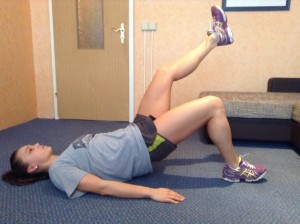
Couch Hip Thrusts
You can progress to one leg once you get stronger. Push through your heels and come up until your body is straight.
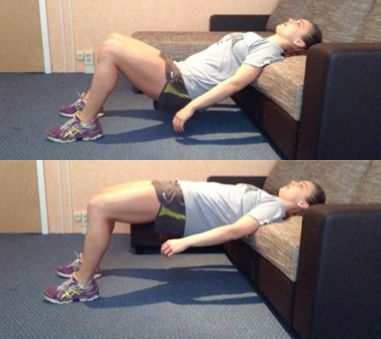
2. Strengthen Your Calves
Strong calves will help to take pressure off the knee joint during jumping. Much like building the glutes, we want to build the muscles that can help us in the large Volleyball movements, rather than just focussing on the quads. The best way to do this is with a single leg calf raise. If you have a ledge to work on you can get through a better range of motion, but the floor works ok too. Raise yourself up slowly with one leg, and bring yourself back down. Go for the maximum number on each leg.
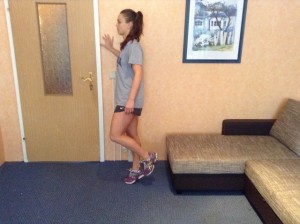
3. Get Isometric Quad Strength
Aside from squatting and leg press, you can get some joint safe strength done at home with static work for your quads. This is great for people with knee pain as you can get the quads firing a little better without aggravating the joint further. Wall squats are the simplest exercise you can do at home for your quads. Prop yourself up against the wall, drop to 90 degrees and hold it. Once you master that, bring a leg off the floor and do single leg work.
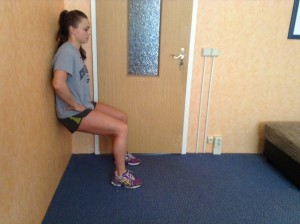
If you are a high level player you do need to do work in the gym for your quads, but this stuff at home everyday will simply help you get better activation and strength around the knee joint without aggravating you further.
4. Stretch Your Rec Fem
Your rec fem is a troublesome muscle for the knee. It is a hip flexor as well as a knee extensor, which means it crosses both the hip and knee joint. It attaches directly onto the patella tendon, so when this get’s tired and sore, so do your knees. You can stretch it out and hit your other hip flexors in the process.
5. Tennis Ball Hit Your Rec Fem
When stretching isn’t enough, it’s time to break out the tennis ball and really hit those muscles. The rec fem is a classic muscle troubled by trigger points. These little nasty knots can cause you referred pain into your knees, and the solution is as simple as getting rid of them
Your rec fem runs up the middle of your quad. Lie on the floor and place the ball under the center of your leg. Roll up and down the muscle. If you find specific points that hurt more or refer pain down to your knee spend more time on then. You can also bend your knee to work the point more. Hold for at least thirty seconds or until you feel the point release.
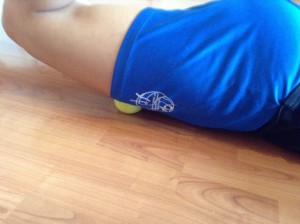
6. Tennis Ball Smash Your Glute Med & TFL
Despite not directly attaching to your knee, your glute med and TFL have a really big effect on your pain levels. Tight hip external rotators can wreak havoc on the biomechanics of your hips. Your TFL turns into your ITB, which is that big band of fascia that runs down the side of your leg. When that gets tight you often have knee pain.
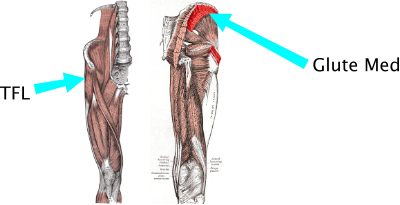
Not only that, aggravated hip muscles can cause direct pain in the knee. Trigger points are nasty creatures that can refer pain a long way. Working through these areas will help you to ensure your knees are functioning as they should, as well as get rid of any pain from referred trigger points.
To smash these areas you need to lie on your side with the ball under the side of your hip. You should move around from the side of your hip, right up until under the tip of the crest of your hip bone. This is bound to hurt and there are quite a few trigger points in here, so be patient. Hold the areas for at least 30 seconds or until you feel the pain subside.
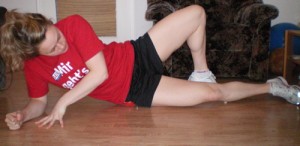

7. Tennis Ball Massage Your Calves and Popliteus
As I mentioned above, good functioning calves will take pressure off the knees. Trigger points in the area can also refer pain.
The popliteus is a little muscle behind your knee. It works to rotate the knee in extension. Basically it he’s to lock it when you straighten your knee. Not only can this cause you biomechanical issues and direct pain, it is one that often is neglected.
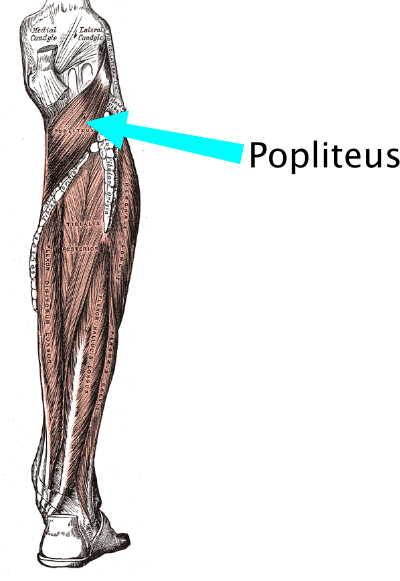
Start at the bottom of your calf right near your achilles. Roll slowly up the length of the calf stopping on any areas that cause pain. Make sure you cover the whole muscle belly. The popilteus lies right beneath the knee joint, so make sure you work right up to under the knee.
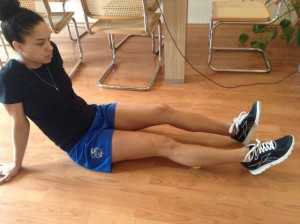
8. Tennis Ball Hit Your Adductors
During volleyball we utilise our adductors a lot. These are otherwise known as your groin muscles and they are partly responsible for a lot of large movements… jumping turning and running to name a few. These muscles perform a lot of actions on the knee and the hip, so when they are tight and aggravated you can have quite a lot of knee issues. Trigger points in these muscles will also refer down into your knees.
The best way to hit these is lying on your front with your leg out to the side at 90 degrees. You can raise the ball by putting it on top of a book, this works to hit the muscles a little deeper. I recommend starting closer to the knee and working up towards the groin area. There are a lot of trigger points in the adductors, so be patient and take your time up the length of the muscle.
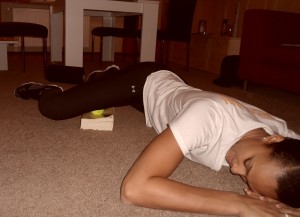
Want to know how to release your whole body with a tennis ball and foam roller?
Click here to check out The Ultimate Self Massage Guide!
9. Mobilize Your Ankles
When you can’t bend your ankles as far as they need to go you often take up the slack with the knees. To get as much out of your ankle joint as possible when jumping and landing you need to have good mobility. Check out this article to find out how to test and improve your ankle mobility.
10. Mobilize Your Hips
Bad hip mobility will often mean sore knees. You want your glutes to be able to fire, and we don’t want your knees to pick up the slack when you can’t There are a number of ways to get looser hips, so check out my hip mobility post here.

Layne Stewart says
I’m sorry I paid $9.95 for your book and unable or better yet not sure where it when. Not to good at this. Please help me download the information. I have been suffering 4 wks with all the knee pain you describe. would love to use the book. thanks Layne
Lauren says
Hey Layne! I just sent you a copy to this email, it was also the one you paid with. You probably got a download link but might have gone to your junk mail, take a quick look! Let me know when you receive it!